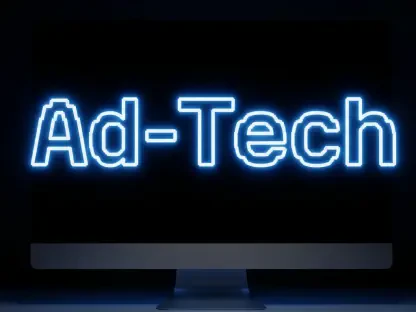In a rapidly evolving digital landscape, Anastasia Braitsik stands out as a global leader in SEO, content marketing, and data analytics. Her insights into the latest advancements in YouTube advertising, particularly Google’s Demand Gen, provide invaluable guidance for marketers looking to leverage this platform. With over two decades of experience, Anastasia navigates through the key updates that are reshaping how brands engage with users on YouTube.
Can you explain what Demand Gen is and how it differs from previous updates in YouTube advertising?
Demand Gen represents a shift from traditional updates, aiming not to replace but to enhance current strategies. It integrates multiple ad types and placements to effectively target the right users at optimal times. Unlike previous simpler updates, Demand Gen is akin to Performance Max, offering an evolved, multi-faceted approach within YouTube advertising. This evolution promises more precise audience connections without confining advertisers to rigid structures.
How does the product feed integration enhance the ecommerce experience on YouTube?
The integration significantly revolutionizes ecommerce by allowing products to be showcased directly within video campaigns, particularly in Shorts and In-stream placements. This approach transforms videos into interactive shopping experiences, making it easier for users to explore products seamlessly without leaving the platform. Customers can engage with a brand’s products more naturally, fostering an environment where conversion is more likely due to the reduced friction in the shopping journey.
What impact does product feed integration have on different ad placements like Shorts and In-stream?
With product feed integration, Shorts benefit greatly by displaying scrollable products at the video’s bottom, which users can easily click through to purchase. It’s an engaging format that holds attention while providing immediate shopping options. For In-stream placements, the integration acts as a constant visual prompt throughout the video, where products appear below and continually remind viewers of what’s being offered, thereby increasing potential for conversions.
How do Shorts benefit from the product feed integration and what challenges might advertisers face?
Shorts capitalize on cost efficiency and engagement by blending video content with a dynamic product display at the bottom. However, the challenge lies in optimizing the integration to generate engagement akin to In-Feed or In-stream stability. The key is ensuring that every impression is meaningful, incentivizing advertisers to hone their retargeting strategies to captivate users who have interacted with the products or brand, thereby establishing a more engaged audience base.
Why is retargeting important when utilizing product feed integration for ecommerce brands?
Retargeting plays a crucial role as it builds upon the initial touches made by users with a brand, driving intent through personalized interactions. With product feed integration, retargeting can effectively remind users of products they previously engaged with. It’s about maintaining the brand presence in a user’s buying journey, turning those passive interactions into active decisions as they are nudged toward completing a purchase.
What advantages does segmentation offer advertisers when using YouTube-only inventory?
Segmentation allows advertisers to exert greater control over where their ads appear by isolating YouTube inventory from the broader Display Network. This control means they can focus budget and creative efforts more specifically on YouTube’s strengths without expenditure spillover into less effective areas. Segmentation ensures that ads are seen by more relevant audiences, thereby enhancing the potential reach and effectiveness of campaigns.
How has Demand Gen changed the ability to control spending between YouTube and the Display Network?
Demand Gen restores control to advertisers by allowing them to choose precisely where their ads are displayed. Before this, ad spend was essentially funneled by default into the Display Network, diluting the potential impact on YouTube. Now, advertisers can allocate resources more strategically, ensuring that the ad spend aligns with goals specific to the YouTube platform, thereby enhancing campaign efficiency and outcome predictability.
What have preliminary results shown about the impact of including product feeds in video campaigns?
Initial findings indicate a mixed bag—removing product feeds lowers CPMs yet also decreases click rates and conversions, though watch durations tend to increase. Retargeting can amplify this strategy, as pairing product feeds with video not only boosts engagement but could also lead to direct actions. Therefore, while results are early, the combination suggests elevated engagement and potential increases in conversion rates when aligned correctly.
How can retargeting enhance the effectiveness of product-focused video content?
Retargeting reinforces connections by adapting ads based on prior user actions, creating a personalized experience. For product-focused video content, this means crafting a narrative where product interests shown previously are highlighted, tailoring messages to reaffirm and incite action. Retargeting can transform curiosity into purchase intent by strategically reinserting products into the viewer’s decision-making process.
How does targeting differ when segmenting between In-stream, In-Feed, and Shorts placements?
Each placement caters to unique user behaviors and expectations. In-stream ads suit longer engagement with immersive educational content, whereas In-Feed aims for users in discovery mode seeking inspiration, demanding content that captivates instantly. Shorts are about quick, entertaining content, thriving on virality and user interest. Distinct targeting strategies ensure ads meet the specific demands of each platform, maximizing their respective strengths.
What characteristics of In-feed ads lend themselves to user engagement during exploration mode?
In-feed ads thrive on the discovery journey because they don’t interrupt a user’s chosen content but attract them during exploratory phases. Their success lies in compelling visuals and intriguing thumbnails that catch the eye amidst the digital noise. The challenge and opportunity for advertisers is to create content so engaging that it captivates at first glance, tapping into the user’s curiosity and inviting deeper interaction.
Do you have any advice for our readers?
For anyone navigating the evolving landscape of YouTube advertising, my advice is to embrace continuous testing and learning. With Demand Gen, experiment with different ad placements and product feed integrations. Emphasize crafting authentic, quality content that resonates with targeted segments and keeps reevaluating strategy based on performance data. The digital marketing world is as dynamic as its users, and adaptability is key to success.









